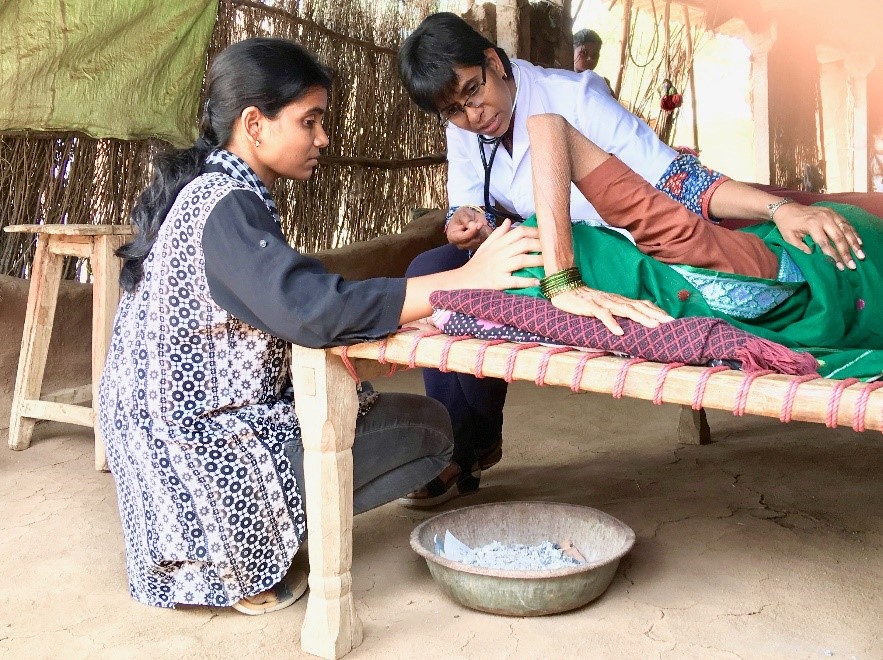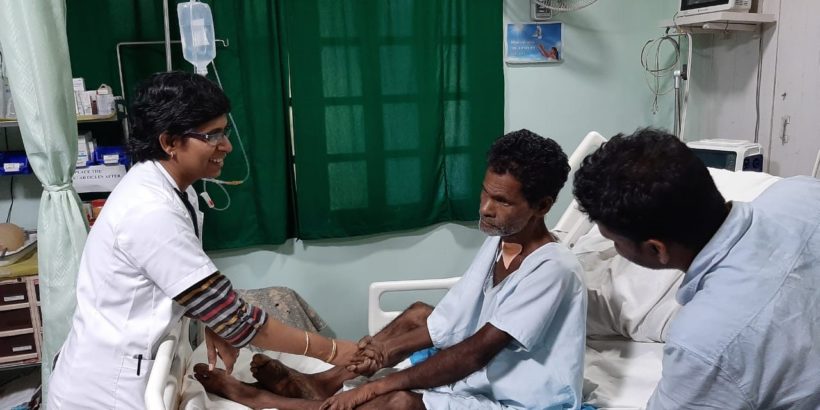Frontline healthcare workers—physicians, nurses, laboratory personnel, community health workers (CHWs), and social mobilizers—confront typhoid in their communities every day, and therefore have an integral role in typhoid prevention and control. During the 11th International Conference on Typhoid and Other Salmonelloses we celebrated a few of these exemplary healthcare workers and the many ways each of them is working to take on typhoid. Now, we are pleased to share their work and highlight the impact each is having in their local community in our new four-part blog series, “Prevention in Action.”
We begin this series with Dr. Ashita Waghmare Singh, MD in General Medicine and MA in Bioethics. Dr. Singh is the head of the Medicine Department at Chinchpada Christian Hospital and is associated with Christian Medical College, Vellore. This is her story.
—
Typhoid is a disease of poverty, and here in Nandurbar—an impoverished, rural, predominately tribal district in northwest Maharashtra state, India, where about 72% of the population lives below the poverty line—we know typhoid all too well.
Despite being declared open defecation free in April 2018, open defecation remains the norm for a majority of the people. While some villages do have toilets, much of the population has yet to be convinced of their many health benefits—a result of both poor health education and a general mistrust of modern medicine. Further, many people live in areas where safe water sources are unavailable and soap for handwashing is rarely used. As a result, typhoid and other food- and water-borne diseases are common.
Unfortunately, many people who fall ill with typhoid in Nandurbar don’t receive the care they need. By and large, much of the population experiences difficulty accessing quality healthcare services. Of the few healthcare facilities that do exist, many lack the appropriate technology to accurately diagnose typhoid; as a result, the majority of local healthcare practitioners rely on suboptimal treatment for febrile illnesses. Further, without proper diagnoses, many cases of typhoid fever are misdiagnosed, which can result in severe complications, including ileal perforations and intestinal bleeding, and too often results in loss of life. What is more, the high prevalence of sickle cell disease in the community means many children and adults are particularly vulnerable to capsulated organism infections such as typhoid.

When I joined Chinchpada Christian Hospital as the head of the Medicine Department in October 2014, I knew that we—as trained healthcare practitioners—could make a difference in the community. During the last five years, with the help of a dedicated staff, we have revived the hospital with investments in infrastructure, technology, tools, and training, leaving us better equipped to take on typhoid in our community. As part of a multi-tiered typhoid surveillance study funded by the Bill & Melinda Gates Foundation, we now perform blood cultures for all febrile admissions to the hospital. This helps us to diagnose typhoid conclusively at our hospital, whereas before it was impossible to do so. Once a case is confirmed, our patients are treated with the appropriate antibiotics, and the family is provided with information on typhoid prevention and on how safe water, sanitation, and good hygiene practices can limit transmission of disease.
However, challenges remain. The misuse of antibiotics is commonplace. Often when a person falls ill, the family pursues treatment wherever is convenient—sometimes receiving antibiotics from unqualified healthcare practitioners or over-the-counter at a local pharmacy. Many people fail to complete the entire antibiotic course, often ceasing treatment once symptoms subside. This not only increases the risk of drug resistance, but also allows asymptomatic carriers to remain undetected and continue infecting others. Further, while vaccines are effective interventions, the options currently available on the market are too expensive for many families in the community.
As a trained healthcare practitioner and physician, it is my job to limit human suffering caused by disease. To stamp out typhoid here in Nandurbar, I know that my staff and I must be diligent in our clinical assessments and diagnoses of febrile illnesses, always wary of typhoid as a potential cause of illness. We must innovate with the resource we have to design locally-relevant evidence-based treatment protocols for culture-positive cases of typhoid fever. However, our job does not end here.
A physician’s work must extend beyond just diagnoses and treatment, to community engagement, education, and advocacy. We must continue to educate—one patient and one family at a time—about prevention of typhoid. We must advocate for the introduction of new typhoid conjugate vaccines into the national immunization schedule, along with increased and sustained investments in water and sanitation infrastructure. We must look for opportunities to scale up primary prevention of diseases such as typhoid by engaging: local community members and stakeholders; families of patients with whom we have relationships; policy-makers who determine preventive health policy; and people of good-will who care. For this, we need to communicate the burden of disease not only in terms of mortality, but also morbidity and economic impact, because typhoid can impact families in many ways.
Typhoid has far-reaching effects. My staff and I see this firsthand every day at our hospital, but we also see it as members of the community. While I understand that is it my job to diagnose and treat the cause of illness, I also see it as my job to advocate for and utilize the knowledge and resources at my disposal to mobilize change.
Photos courtesy of Dr. Ashita Waghmare Singh.



